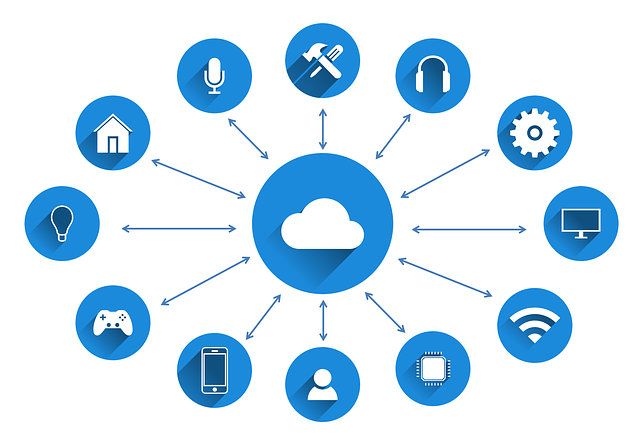By entering your email, you agree to receive our emails, including marketing emails, in line with our Privacy Policy.


Cloud computing has revolutionized the way businesses operate, offering scalable solutions for data storage, processing, and application management.
With promises of cost efficiency, flexibility, and enhanced collaboration, it’s no wonder that cloud adoption has surged across industries. However, the question remains: is cloud computing truly worth it for your business?
While the benefits are clear, there are also challenges and risks that must be carefully considered.
Today we’ll explore the pros and cons of cloud computing, helping you determine whether it’s the right choice for your organization.
We’ve all heard of cloud computing, but what exactly is it and is it really worth it? Cloud computing is the process of storing and accessing data and applications over the internet. It has enabled businesses to access data and programs from anywhere, anytime, and at a much lower cost than traditional methods.
But is cloud computing really worth it? To answer this question, we must look at both the pros and cons of cloud computing.

The major benefit of cloud computing is that it allows businesses to access data and applications from anywhere, anytime. This means that businesses can access information from any device, including laptops, tablets, and smartphones. This makes it easier for employees to access information on the go and keep up with their work.
Another benefit of cloud computing is that it is much cheaper than traditional methods. This is because businesses don’t have to invest in expensive hardware and software, as they can access everything they need through the cloud. This makes it much more cost-effective for businesses.
Finally, cloud computing is incredibly secure. This is because all data is stored in a secure environment and is backed up regularly. This means that businesses don’t have to worry about their data being lost or stolen.
Although cloud computing has many benefits, there are also some drawbacks. One of the biggest drawbacks is that businesses are relying on a third party to store and manage their data. This means that businesses have to trust that the third party is taking the necessary steps to keep their data secure.
Another drawback is that cloud computing can be slow. This is because the data is stored on remote servers and has to be accessed over the internet. This can lead to slower speeds and longer loading times.
Finally, cloud computing can be expensive. This is because businesses have to pay for the storage and bandwidth they use. This can add up over time and can be quite costly.

Overall, cloud computing is a great way for businesses to access data and applications from anywhere, anytime. It is also much cheaper than traditional methods and is incredibly secure. However, there are some drawbacks, including the reliance on a third party, slower speeds, and higher costs.
Ultimately, the decision to use cloud computing should be based on what is best for your business. If you think that cloud computing is the right choice for your business, then it is definitely worth it.

Cloud computing offers several key benefits, including cost savings through reduced hardware expenses, scalability to quickly adjust resources based on demand, and increased collaboration by enabling remote access to data and applications. It also enhances disaster recovery and data backup capabilities, as well as providing access to the latest technologies without the need for extensive in-house IT infrastructure.
While cloud providers typically implement robust security measures, such as encryption and multi-factor authentication, there are still risks involved. Data breaches, loss of control over sensitive information, and compliance with regulations are common concerns. It’s essential to choose a reputable cloud provider with strong security protocols and to ensure that your organization has clear policies and procedures in place to protect your data.
Cloud computing can significantly reduce IT costs by eliminating the need for expensive on-premises hardware and reducing the costs associated with system maintenance and upgrades. However, it’s important to carefully evaluate cloud pricing models, as costs can accumulate with increased usage or additional services. Understanding your organization’s specific needs and usage patterns is crucial for optimizing costs.
Before transitioning to cloud computing, consider factors such as your organization’s specific needs, data sensitivity, compliance requirements, and potential downtime during migration. It’s also important to assess the reliability and reputation of the cloud service provider, as well as to ensure that you have a clear understanding of the terms and conditions of the service. A thorough cost-benefit analysis and a well-planned migration strategy are essential for a successful transition.
Subscribe to our newsletter for exclusive updates and insights on maximizing your income through PLR. Follow us on social media to stay connected and unlock the full potential of your business. Join now and experience the benefits firsthand!




Affiliate Disclosure:
This website may contain affiliate links, which means we may earn a commission if you make a purchase through these links. We only recommend products or services that we believe will add value to our readers. The commissions earned through these links help support the content we create and maintain on this website. Please note that this does not affect the price you pay for any products or services purchased through these affiliate links. Your support is greatly appreciated, and we strive to provide honest and unbiased information to assist you in making informed decisions.
Disclaimer:
This content reflects the personal opinions of the author. It is accurate and true to the best of the author’s knowledge and should not be substituted for impartial fact or advice in legal, political, or personal matters. Your journey to affiliate marketing success starts here.
| Cookie | Duration | Description |
|---|---|---|
| cookielawinfo-checkbox-analytics | 11 months | This cookie is set by GDPR Cookie Consent plugin. The cookie is used to store the user consent for the cookies in the category "Analytics". |
| cookielawinfo-checkbox-functional | 11 months | The cookie is set by GDPR cookie consent to record the user consent for the cookies in the category "Functional". |
| cookielawinfo-checkbox-necessary | 11 months | This cookie is set by GDPR Cookie Consent plugin. The cookies is used to store the user consent for the cookies in the category "Necessary". |
| cookielawinfo-checkbox-others | 11 months | This cookie is set by GDPR Cookie Consent plugin. The cookie is used to store the user consent for the cookies in the category "Other. |
| cookielawinfo-checkbox-performance | 11 months | This cookie is set by GDPR Cookie Consent plugin. The cookie is used to store the user consent for the cookies in the category "Performance". |
| viewed_cookie_policy | 11 months | The cookie is set by the GDPR Cookie Consent plugin and is used to store whether or not user has consented to the use of cookies. It does not store any personal data. |